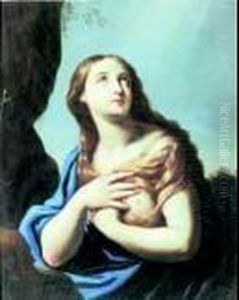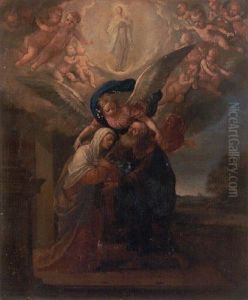Filippo Brizio Paintings
Filippo Brizio, also known as Filippo Briccio, was an Italian painter born in Bologna in 1574. His contributions to the art world were primarily during the late Renaissance and early Baroque periods, showcasing a transition in styles that marked much of the art in this era. Brizio was part of a rich artistic tradition in Bologna, which was home to the Carracci family and their academy, though his exact relationship with the Carracci's Academy remains less documented compared to other artists of his time.
Brizio's artistic journey was significantly influenced by the prevailing styles of his time, especially the works of the Carracci family, which emphasized a departure from the mannerist style towards a more naturalistic and classical approach to painting. This influence is evident in the use of vivid colors, attention to detail, and the dynamic composition of his works. Brizio was adept in various subjects, including religious themes, which were prevalent in his era, as well as mythological scenes and portraits, though his religious paintings are among his most recognized contributions.
Despite his talent, Filippo Brizio has not been as widely studied or celebrated as some of his contemporaries, a fate not uncommon for many artists of the period. However, his works are appreciated for their contribution to the development of Baroque art in Italy, demonstrating the transition from the stringent formulas of the Renaissance to the more expressive and dynamic approaches that characterized Baroque art. Brizio's paintings are characterized by their emotional depth and technical skill, qualities that have allowed his work to be revisited by art historians with a growing interest in the subtleties of this transitional period in Italian art.
Brizio passed away in 1623 in Bologna, leaving behind a modest but significant body of work that reflects the artistic transitions of his time. His legacy is preserved in several churches and collections in Bologna and elsewhere, providing insight into the evolution of Italian painting from the late 16th to the early 17th century. While not as prominent as some of his peers, Brizio's contributions to the Italian Renaissance and early Baroque periods continue to be appreciated for their artistic merit and historical significance.

